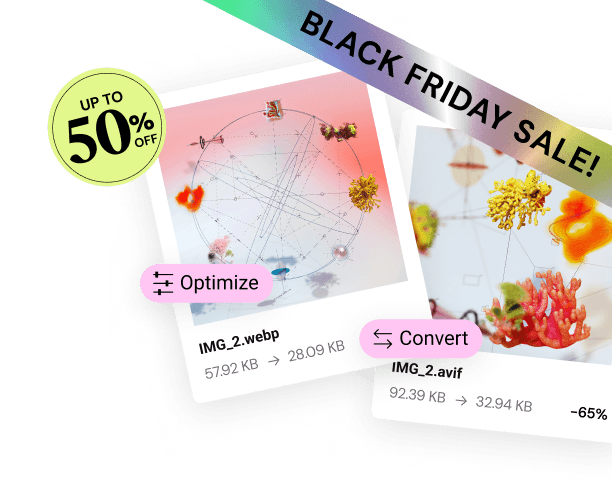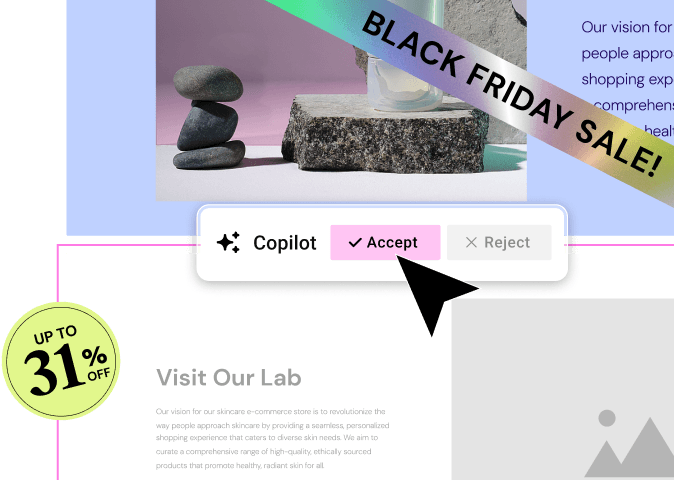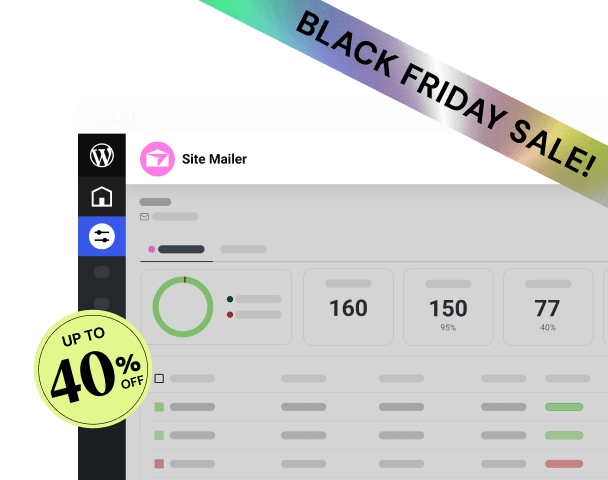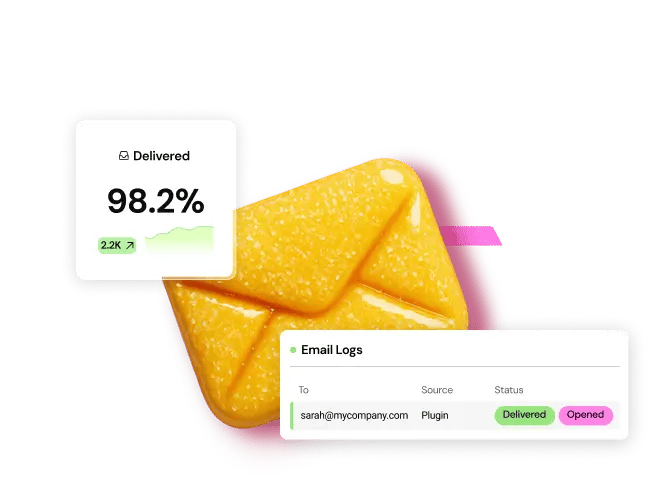Table of Contents
Driving traffic is a multifaceted process that combines a solid technical foundation with smart marketing and content strategies. It requires a thoughtful approach that focuses on attracting the right audience, people who are genuinely interested in what you offer. This guide provides a comprehensive roadmap with actionable strategies to help you increase your website traffic and build a thriving online presence.
Key Takeaways
- Build a Strong Foundation: Your website’s performance, user experience, and mobile-friendliness are prerequisites for any successful traffic strategy. A fast, secure, and easy-to-navigate site built on a platform like WordPress with a tool such as Elementor retains visitors and ranks better in search engines.
- Master SEO: Search Engine Optimization is the most powerful strategy for sustainable, long-term organic traffic. It involves thorough keyword research, creating high-quality content that matches user intent, and building your site’s authority through backlinks.
- Content is Your Engine: High-value content is the fuel for almost every traffic channel. A consistent blogging schedule, combined with evergreen pillar pages, attracts visitors through search engines and provides valuable assets to share across social media and email.
- Promote Across Multiple Channels: Do not just publish content and hope for visitors. You need to actively promote it. Leverage email marketing to bring back repeat visitors, use social media to reach new audiences, and consider paid advertising for targeted, accelerated growth.
- Analyze and Adapt: Use web analytics tools like Google Analytics to track your traffic sources and understand visitor behavior. This data is crucial for identifying what works, refining your strategies, and making informed decisions to double down on your most effective channels.
The Foundation: Building a Traffic-Ready Website
Before you invest time and resources into driving traffic, you must ensure your website is prepared to welcome visitors. A poor user experience can cause visitors to leave immediately, wasting your marketing efforts and signaling to search engines that your site isn’t valuable. Here is how to build a solid foundation.
Start with a High-Performance Website Builder
Your website’s core platform determines its potential for speed, flexibility, and search engine friendliness. This is why millions of web creators choose WordPress, an open-source content management system (CMS) that powers over 43% of the web. It offers unmatched flexibility and control.
To unlock the full potential of WordPress, you need a powerful website builder. A visual, drag-and-drop builder like Elementor empowers you to create a professional, pixel-perfect website without writing a single line of code. It gives you complete design freedom, ensuring you can build a site that not only looks great but is also structured for optimal performance. When paired with a lightweight framework like the Hello Theme, you create a fast-loading foundation that both users and search engines will appreciate.
Optimize for User Experience (UX) and Mobile
User experience is about how a person feels when interacting with your website. Is it easy to find information? Does the site load quickly? Does it work well on a smartphone? A positive UX keeps visitors on your site longer, encourages them to explore more pages, and makes them more likely to convert.
Google also prioritizes user experience in its rankings, especially on mobile devices. With its mobile-first indexing, Google primarily uses the mobile version of a website for ranking and indexing.
Here are key UX factors to focus on:
- Responsive Design: Your website must automatically adapt to fit any screen size, from desktops to tablets and smartphones. Elementor’s built-in responsive editing tools make it simple to fine-tune your design for every device, ensuring a seamless experience for all visitors.
- Simple Navigation: A clear and intuitive menu structure helps users find what they are looking for without frustration. Organize your pages logically and make sure your main navigation is visible on every page.
- Fast Loading Times: In our fast-paced digital world, patience is thin. A slow-loading website leads to high bounce rates. Aim for a load time of under three seconds. Later in this guide, we will discuss specific ways to improve site speed.
Secure Your Website with Managed Hosting
Your choice of web hosting directly impacts your site’s speed, security, and reliability. Managed hosting solutions are specifically designed to take the technical complexities off your plate. They handle security monitoring, software updates, and performance optimization, so you can focus on your business.
For a WordPress website built with Elementor, an integrated solution like Elementor Hosting offers a significant advantage. It provides a hosting environment engineered specifically for Elementor, guaranteeing optimal performance and security. With features like a built-in CDN (Content Delivery Network), automatic backups, and expert support from the same team that built your website builder, you get a seamless, all-in-one solution that provides peace of mind.
Implement Web Analytics from Day One
You cannot improve what you do not measure. Web analytics tools are essential for understanding how visitors find and interact with your website. Setting them up from the very beginning allows you to collect valuable data that will inform your entire traffic strategy.
The two most important free tools to install are:
- Google Analytics: This tool tracks a wealth of data about your visitors, including how many people visit your site, which pages they view, how long they stay, and where they come from (e.g., Google search, social media, other websites).
- Google Search Console: This tool provides insights into your site’s performance specifically in Google Search. You can see which keywords people use to find you, identify technical errors, and submit your sitemap to help Google crawl your site more effectively.
Mastering Search Engine Optimization (SEO) for Organic Traffic
Search Engine Optimization (SEO) is the practice of optimizing your website to rank higher in search engine results for relevant queries. It is arguably the most valuable long-term strategy for driving traffic. A top position in Google can bring a consistent, passive stream of highly targeted visitors to your site for months or even years.
The Core of SEO: Keyword Research
Keyword research is the foundation of any successful SEO strategy. It is the process of identifying the words and phrases your target audience uses when searching for your products, services, or content. By targeting these keywords, you can attract visitors who are actively looking for what you offer.
- Types of Keywords: Keywords generally fall into three categories based on user intent.
- Informational: Users are looking for information (e.g., “how to drive traffic to your website”).
- Navigational: Users are looking for a specific website (e.g., “Elementor”).
- Transactional: Users are ready to make a purchase (e.g., “buy Elementor Pro“).
- Keyword Research Tools: Several tools can help you find keywords, analyze their search volume (how many people search for them), and assess their difficulty (how hard it is to rank for them).
- Free Tools: Google Keyword Planner, Ubersuggest.
- Paid Tools: Ahrefs, SEMrush, Moz Keyword Explorer.
- Choosing the Right Keywords: Aim for a mix of keywords. High-volume “head” terms are competitive, but long-tail keywords (longer, more specific phrases like “best wordpress hosting for designers”) are often less competitive and attract highly qualified traffic.
On-Page SEO: Optimizing Your Content
On-page SEO refers to the optimizations you make directly on your website pages to help search engines understand their content and relevance.
Crafting High-Quality, Relevant Content
Content is the heart of SEO. Search engines want to provide their users with the best possible answers to their questions. Your goal is to create content that is more comprehensive, helpful, and engaging than anything else on the web for your target keywords.
This means going beyond just writing text. High-quality content often includes:
- In-depth explanations and actionable advice.
- Supporting images, videos, and infographics.
- Original research, data, or case studies.
- A clear, easy-to-read structure with headings and lists.
Creating compelling content can be challenging. An integrated tool like Elementor AI can act as a creative partner. It helps you generate ideas, draft entire sections of text, refine your wording for tone and clarity, and even translate content, all without leaving your website editor. This can significantly speed up the content creation process.
Optimizing Key HTML Elements
Once you have great content, you need to structure it in a way that search engines can easily understand.
- Title Tags: This is the clickable headline that appears in search results. It should be compelling and include your primary keyword.
- Meta Descriptions: This is the short summary that appears below the title tag in search results. While not a direct ranking factor, a well-written meta description entices users to click.
- Header Tags (H1, H2, H3): Headers structure your content and help search engines understand the hierarchy of information. Your main title should be an H1 tag, with subheadings as H2s and H3s.
- Image Alt Text: Alt text is a short description of an image. It helps search engines understand the image’s content and is crucial for accessibility for visually impaired users.
- Internal Linking: Linking to other relevant pages on your own website helps search engines discover your content and understand the relationship between your pages. It also keeps users on your site longer.
Technical SEO: Ensuring Your Site is Crawlable and Fast
Technical SEO involves optimizing the technical aspects of your website to help search engines crawl and index it more effectively.
Site Speed and Core Web Vitals
Site speed is a confirmed ranking factor for Google. A faster website provides a better user experience. Google measures this through a set of metrics called Core Web Vitals, which assess loading performance, interactivity, and visual stability.
One of the biggest culprits of slow websites is large, unoptimized images. The Image Optimizer by Elementor plugin can solve this problem automatically. It compresses images, resizes them to optimal dimensions, and converts them to next-gen formats like WebP, all without sacrificing quality. This simple step can dramatically improve your loading times.
XML Sitemaps and Robots.txt
- An XML sitemap is a file that lists all the important pages on your website, making it easier for search engines to find and crawl them.
- A robots.txt file tells search engines which pages or sections of your site they should not crawl (e.g., admin pages).
Structured Data (Schema Markup)
Structured data is a standardized format of code you can add to your pages to help search engines understand the context of your content in greater detail. For example, you can use it to identify a product, a recipe, or a review. This can result in “rich snippets” in search results, such as star ratings or product prices, which can significantly increase your click-through rate.
Off-Page SEO: Building Authority with Backlinks
Off-page SEO refers to actions taken outside of your own website to impact your rankings. The most important off-page factor is backlinks. A backlink is a link from another website to yours. Search engines view backlinks as votes of confidence. When an authoritative website links to you, it signals that your content is credible and valuable.
Earning high-quality backlinks is a long-term effort. Here are some proven strategies:
- Create Link-Worthy Content: The best way to get backlinks is to create exceptional content that people naturally want to link to. This includes ultimate guides, original research, and free tools.
- Guest Blogging: Write an article for another reputable website in your industry. In return, you typically get a link back to your site in your author bio.
- Digital PR: Reach out to journalists and bloggers with interesting stories, data, or expert insights from your company to earn media mentions and links.
Driving Traffic with Content Marketing
While content is a crucial part of SEO, content marketing is a broader strategy that involves creating and distributing valuable content to attract and retain a clearly defined audience.
Develop a Content Strategy
A successful content marketing plan starts with a clear strategy.
- Define Your Audience: Create detailed buyer personas to understand your ideal customer’s pain points, goals, and interests.
- Set Your Goals: What do you want to achieve with your content? Your goals could be to increase organic traffic, generate leads, or build brand awareness.
- Create a Content Calendar: Plan your content in advance. A calendar helps you stay consistent and cover a strategic mix of topics. Tools like the Elementor AI Site Planner can help you generate a complete sitemap and content structure for your website, giving you a strategic blueprint before you even start designing.
Blogging for Consistent Traffic
A blog is one of the most effective tools for driving consistent traffic. Each blog post is a new opportunity to rank for keywords in search engines and a new asset to share on social media and in email newsletters. By consistently publishing high-quality blog posts that address your audience’s questions, you establish your website as a valuable resource and an authority in your industry.
Creating Evergreen Content and Pillar Pages
Evergreen content is content that remains relevant and valuable for a long time, such as how-to guides or foundational articles. A pillar page is a comprehensive, in-depth piece of content on a broad topic that links out to more detailed articles on subtopics. For example, this article is a pillar page on “website traffic.” These long-form assets are excellent for attracting backlinks and ranking for competitive keywords.
Repurposing Content for Maximum Reach
Creating great content takes time. Maximize your return on investment by repurposing it into different formats.
- A blog post can become a YouTube video.
- Key statistics from an article can be turned into an infographic.
- A series of related blog posts can be compiled into an ebook.
- A video can be transcribed into a blog post.
This strategy allows you to reach different audience segments on various platforms without starting from scratch each time.
Leveraging Email Marketing to Drive Repeat Visitors
Email marketing is a powerful channel because you own your audience. Unlike social media or search engines, where algorithms control your reach, your email list provides a direct line of communication with people who have explicitly opted to hear from you.
Why Email Marketing is a Powerful Traffic Driver
Email is an excellent way to drive repeat traffic to your website. When you publish a new blog post, launch a new product, or have a special promotion, you can notify your subscribers directly and bring them back to your site. This engaged audience is often more likely to convert than first-time visitors.
Building Your Email List
To get started with email marketing, you need to build a list of subscribers. You can do this by placing sign-up forms and popups strategically across your website. To encourage sign-ups, offer a “lead magnet,” which is a valuable free resource in exchange for an email address. Examples include:
- A helpful checklist or template.
- An exclusive ebook or guide.
- A discount coupon for their first purchase.
Elementor Pro includes a powerful Form Builder and Popup Builder that make it easy to create and customize these lead capture elements without needing extra plugins.
Crafting Engaging Email Campaigns
Once you have a list, you can start sending campaigns.
- Newsletters: Send regular updates with your latest content, news, and tips.
- Promotional Emails: Announce sales, new products, or special offers.
- Automated Sequences: Set up “drip” campaigns that are triggered by user actions, such as a welcome series for new subscribers.
For your email strategy to be effective, your emails must be delivered reliably. Many businesses struggle with transactional emails (like form confirmations or password resets) landing in spam. A tool like Site Mailer by Elementor ensures these critical emails reach the inbox. For broader marketing campaigns, an integrated platform like Send by Elementor allows you to manage your lists and send beautiful newsletters directly from your WordPress dashboard.
Using Social Media to Funnel Traffic to Your Site
Social media is not just a place for brand awareness. It can also be a significant source of website traffic if used strategically.
Choose the Right Platforms
You do not need to be on every social media platform. Focus your efforts on the one or two platforms where your target audience is most active. For example:
- LinkedIn is ideal for B2B companies.
- Instagram and Pinterest are great for visual brands in industries like fashion, food, and travel.
- Facebook has a diverse user base and is effective for many types of businesses.
- X (formerly Twitter) is excellent for real-time news and conversations.
Optimize Your Social Media Profiles
Make it easy for people to find your website. Include a clear link to your site in the bio section of all your social media profiles. Use high-quality profile pictures and cover photos that are consistent with your brand’s visual identity.
Share Your Content and Engage with Your Audience
Regularly share links to your blog posts, videos, and other content on your social media channels. But do not just broadcast. Social media is a two-way street. Engage with your followers by:
- Asking and answering questions.
- Running polls and quizzes.
- Responding to comments and messages.
- Sharing user-generated content.
Join Relevant Online Communities
Participate in groups and communities where your target audience hangs out. This could be Facebook Groups, LinkedIn Groups, subreddits, or forums like Quora. The key is to provide genuine value. As digital marketing expert Itamar Haim often advises, “Become an active, helpful member of the community first. Share your expertise freely and answer questions. Once you have established trust, you can occasionally share a link to your content when it is genuinely relevant and helpful.” This approach builds authority and drives qualified traffic without coming across as spammy.
Paid Traffic Strategies for Accelerated Growth
While organic strategies like SEO and content marketing are powerful for long-term growth, paid traffic can deliver immediate results. Paid advertising allows you to place your website in front of a highly targeted audience quickly.
Search Engine Marketing (SEM) with Google Ads
With Google Ads, you can bid to have your ads appear at the top of the search results for specific keywords. This is an excellent way to capture traffic from users with high purchase intent. For example, someone searching for “emergency plumber near me” is likely ready to hire someone immediately.
Social Media Advertising
Platforms like Facebook, Instagram, and LinkedIn offer powerful advertising tools that allow you to target users based on very specific criteria, including:
- Demographics (age, gender, location).
- Interests (hobbies, pages they follow).
- Behaviors (past purchases, device usage).
This level of targeting enables you to create highly relevant ads that drive qualified traffic to your site.
The Importance of Landing Pages
When running paid campaigns, never send traffic to your homepage. Instead, create dedicated landing pages that are specifically designed for each campaign. A landing page should have a single focus and a clear call to action, which dramatically increases conversion rates. Elementor’s visual builder makes it incredibly easy to create, test, and duplicate high-converting landing pages in minutes.
Other Powerful Traffic Generation Tactics
Here are a few more proven strategies to add to your traffic generation toolkit.
Guest Blogging on Authoritative Sites
Guest blogging involves writing and publishing an article on someone else’s website or blog. This strategy offers three key benefits:
- It exposes your brand to a new, relevant audience.
- It helps you build high-quality backlinks to your site, which boosts your SEO.
- It positions you as an expert and authority in your field.
Affiliate Marketing and Influencer Collaborations
Leverage the audiences of others by partnering with affiliates or influencers. Affiliates promote your products or services in exchange for a commission on sales they generate. Influencers can promote your brand to their followers for a fee or in exchange for free products.
Submitting Your Site to Online Directories
Ensure your business is listed in relevant online directories. For local businesses, a Google Business Profile is essential. You should also look for industry-specific directories that your potential customers might use.
Ensuring Web Accessibility
Web accessibility means designing your website so that people with disabilities can use it. This is not only the right thing to do, but it can also expand your potential audience. An accessible website is also technically sound, which can have positive benefits for your SEO. A tool like Ally by Elementor can scan your website for accessibility issues and provide guided steps to fix them, making it easier to create an inclusive experience for all visitors.
Analyzing Your Traffic and Refining Your Strategy
Driving traffic to your website is an ongoing process of implementation, analysis, and refinement. Use the data from your analytics tools to understand what is working and what is not.
- Track Your KPIs: Monitor key performance indicators such as total traffic, traffic sources, top-performing pages, bounce rate, and conversion rates.
- Identify Your Best Channels: Look at your analytics to see which channels are sending you the most engaged traffic. Should you invest more in SEO? Is a particular social media platform outperforming others?
- Double Down on What Works: Once you identify your most successful content and traffic channels, create more of what your audience loves and invest more resources into the channels that deliver the best results.
- A/B Test for Optimization: Continuously test different elements of your website, such as headlines, calls to action, and landing page layouts, to improve your conversion rates.
Conclusion
Driving traffic to your website is not about finding one secret trick. It is about building a comprehensive, sustainable strategy that combines a high-quality website with exceptional content and multi-channel promotion. It starts with a solid foundation: a fast, secure, and user-friendly site. From there, you can layer on powerful strategies like SEO, content marketing, email marketing, and social media to attract new visitors and bring back existing ones.
The journey to increasing your website traffic is a marathon, not a sprint. Be patient, be consistent, and always focus on providing value to your audience. By implementing the strategies in this guide and using the right set of tools, such as the complete web creation platform offered by Elementor, you can build a steady stream of qualified traffic that will help you achieve your online goals.
Frequently Asked Questions (FAQ)
1. How long does it take to see traffic from SEO? SEO is a long-term strategy. While you might see some initial results within 3-6 months, it often takes 6-12 months of consistent effort to see significant, sustainable traffic growth, especially for new websites or competitive industries.
2. What’s the difference between organic and paid traffic? Organic traffic comes from users finding your site through unpaid search engine results. Paid traffic comes from users clicking on advertisements you have paid to place on search engines or social media. Organic traffic is sustainable and builds authority over time, while paid traffic provides immediate but temporary results.
3. How much should I spend on paid ads? There is no one-size-fits-all answer. Your budget depends on your industry, goals, and the cost-per-click (CPC) for your target keywords. Start with a small, manageable budget to test campaigns. As you identify what works, you can scale your spending for a positive return on investment.
4. Is social media really effective for driving website traffic? Yes, but its effectiveness depends on your industry and strategy. Social media is powerful for building brand awareness and community. When you share valuable content and engage with your audience, it can become a significant source of referral traffic to your website.
5. What is the single most important factor for website traffic? High-quality content that perfectly matches user intent is the most important factor. If you create the best resource on the internet for a specific topic, you will naturally attract traffic from search engines, social shares, and backlinks over time.
6. How often should I be publishing new content? Consistency is more important than frequency. For most businesses, publishing one to two high-quality, in-depth blog posts per week is a great goal. It is better to publish one amazing article per week than five mediocre ones.
7. Do I need a blog to get traffic? While not strictly mandatory for every type of website, a blog is one of the most effective and proven tools for driving organic traffic. It allows you to target a wide range of informational keywords, establish your authority, and create assets for social and email promotion.
8. What are Core Web Vitals and why do they matter for traffic? Core Web Vitals are a set of specific metrics that Google uses to measure a website’s loading speed, interactivity, and visual stability. They are part of Google’s page experience ranking signals. A good score can improve your search rankings, leading to more organic traffic.
9. How can I get more traffic without creating new content? You can update and improve your existing content. Identify pages that are already ranking but are not in the top positions. Add more detail, update information, improve the readability, and add new visuals. You can also focus on promoting your existing evergreen content to new audiences.
10. Why is my website traffic going down? A drop in traffic can be caused by many factors. Common reasons include increased competition, a recent Google algorithm update, technical SEO issues on your site (like crawling errors), losing valuable backlinks, or a decrease in promotional activities. Use Google Analytics and Search Console to investigate the source of the decline.
Looking for fresh content?
By entering your email, you agree to receive Elementor emails, including marketing emails,
and agree to our Terms & Conditions and Privacy Policy.












